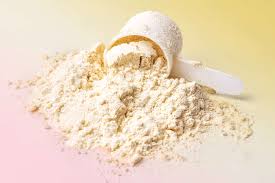Whey protein is a popular nutritional supplement for athletes of all kinds. However, I often meet people who use these supplements, but they don’t even have a basic understanding of what they actually eat and why whey protein is suitable for them.
Protein promotes muscle growth and repair. Therefore, people often use protein supplements containing whey, casein or soy to optimize these effects, especially after a workout. However, your first choice for protein should be whole foods, not supplements. Protein sources from “whole” foods such as lean meat, fish, dairy, legumes, nuts and seeds are just as effective (in some cases more effective) than protein supplements. Whey protein products can be an affordable, convenient and effective way of supplying protein when your need is greater than you can obtain through diet or when conventional dietary sources are not available.
Basic information about whey and whey protein
Whey is separated from milk in the production of cheese and curd. When whey is separated from milk, some lactose is transferred into it, but mainly the whey protein complex Therefore, it contains all the essential amino acids (EAA) necessary for muscle growth and recovery. Dairy products, and of course milk itself, are the best “complete” source of whey protein. The whey protein itself is obtained from whey by concentrating it, further concentrating it and drying it to powder form. Whey protein powder can be sold as a regular food or as a dietary supplement and is often added to other foods and dietary supplements, including gels, powders, sports/energy bars and ready-made shakes.

Most of you have probably come across the English abbreviations WPC, WPI or WPH. These are always whey proteins, which have different purities and possibly different absorption rates due to different types of processing. WPC – whey protein concentrate is of high quality, but still contains a certain amount of non-protein substances (e.g. lactose). WPI is a whey protein isolate that consists almost exclusively of whey protein. WPH is then whey hydrolysate, where the proteins are already partially digested (digested) to speed up absorption in the body.
Are there any risks associated with taking whey protein products?
Consumption of whey protein is generally considered safe. However, keep in mind that whey comes from cow’s milk, so if you have a milk protein allergy, you should avoid whey protein products.
If I’m taking a protein supplement, is whey protein the best type?
Whey is often considered superior to other types of protein such as casein (another milk protein) and soy. This is because whey is digested faster than casein and soy, leading to a rapid increase in amino acid levels in the body. Whey also has a higher content of leucine, an important amino acid for building muscle. Casein, on the other hand, is digested more slowly and can help prevent muscle breakdown, especially after an “overnight fast”. Therefore, the combination of whey and casein you find in a glass of milk may be more beneficial than whey protein alone. Further research is needed to compare the effects of whey with other supplementary forms of protein, such as beef and egg proteins and protein blends.
When can I use whey protein?
Overall, it’s better to get your protein from wholesome foods such as lean meats, fish, low-fat dairy, legumes, nuts and seeds throughout the day at meals and snacks. Consuming a variety of protein foods will provide you with all the essential amino acids, plus other nutrients such as vitamins and minerals that are important for performance and recovery. On the other hand, it is clear that after a hard workout, when the stomach is still poorly blooded, it is much more effective and pleasant for athletes to have a protein shake, which in a relatively small volume will help to replenish protein quickly and in the necessary amount.

How much whey protein should I take?
If you don’t have food sources of protein, whey protein products can help cover your total protein needs, but there are no official recommendations for whey protein alone. It is sobering to note that most whey protein powders provide 20-30g of protein per serving or “scoop”, which is the same amount of protein as in approximately 100-150g of meat, poultry or fish. If you want to learn how to calculate your own protein needs based on your body weight and activity level, then the best way to calculate your protein intake is to consult a nutritionist. In general, the girl protein in athletes is in the range of 1-2 g/kg of the athlete’s weight. However, it depends on the type of sport, the level of exertion, the ratio of fat to muscle mass in the body, etc. atp. Exceeding the recommended protein intake will not bring any additional benefits to your performance.
Summary at the end
There are no clear advantages to consuming whey over other sources of protein. The International Society of Sports Nutrition, the American College of Sports Medicine or the Academy of Nutrition and Dietetics recommend consuming protein from whole foods. If high-quality protein foods are not available or not practical, protein products that contain both whey and casein are acceptable and may be beneficial. If you look at the composition of commercially available nutritional supplements aimed at muscle growth and recovery, then you will find that whey protein clearly plays first fiddle in this category. It is of course because of their suitability for our organism, but also because of their availability and price. In short, you can’t go wrong with whey protein in reasonable amounts. However, you should approach the use of nutritional supplements sensibly and, where it is possible to use protein from wholesome foods, prefer such foods.


Leave a Reply